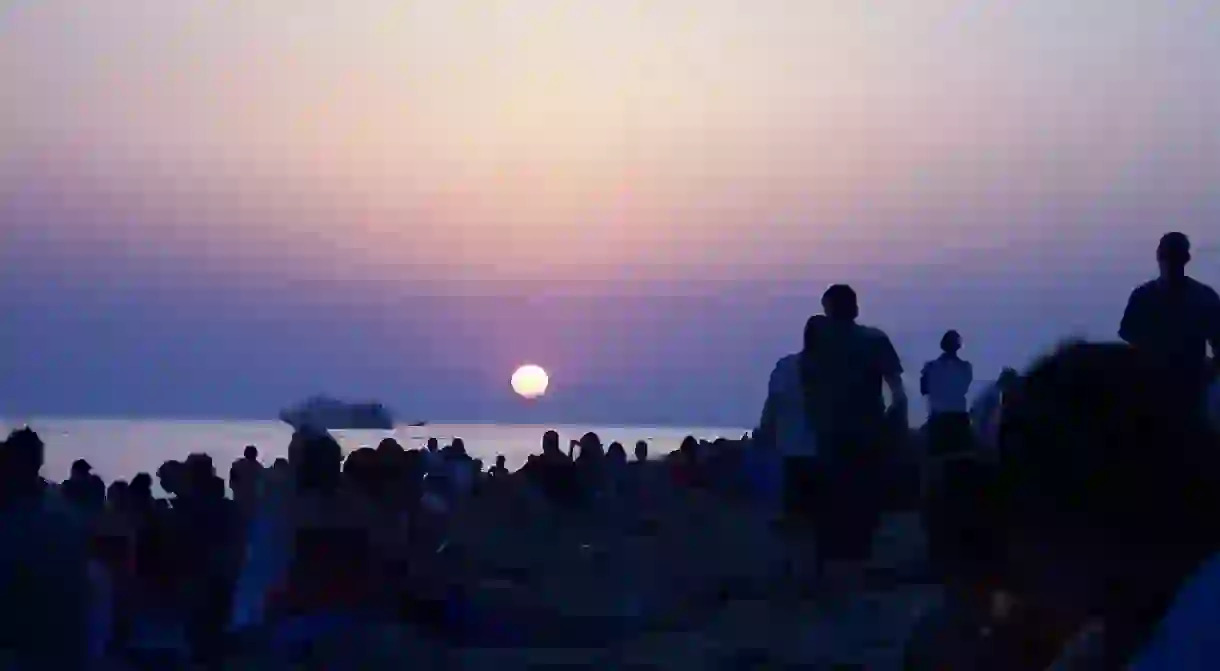The History Of The Balearic Beat

Nowadays, Balearic Beat is a recognized music genre like any other, commercialized during the 1990s with compilation records such as Buddha-Lounge. But back in the 1980s when Ibiza was just emerging as the party capital it is today, the term Balearic Beat was a loose concept used to describe the eclectic mix of dance and other forms of electronic music which DJs were experimenting with on the island at the time. We look back at the history of the unique sound which defined the early days of Ibiza.
The Spanish island of Ibiza had attracted artists and bohemians looking to escape the pressures of the city since the 1950s, but the late 1970s and mid 1980s marked a turning point in the island’s history. At the time there was a handful of individuals experimenting with a mixture of music from Europe and the U.S., especially dance music, which was only just emerging from Detroit. Soon old farm buildings were being converted into all night dance temples and rumor spread to the mainland about the hedonist parties which were attracting growing numbers of curious party-goers.

One of the most common tales of how Balearic Beat was first ‘discovered’ involves the iconic Ibiza nightclub, credited as being one of the first to open on the island. At the time, an Argentine DJ going by the name of DJ Alfredo was holding a residency in the nightclub he had been left to manage by the owner. He played an eclectic mix of genres ranging from europop to mystic rock, including records by artists such as Chris Rea, who would become staples of the Balearic Beat movement. He also borrowed from R&B, Latino music, or folk music if it fit the mood. Eventually this hybrid sound made its way back to mainland Europe, and was especially well received in the United Kingdom where the rave culture was taking off.
More than just a musical genre though, Balearic Beat is considered by many an attitude towards life. The music emerged amongst a feeling that ‘anything goes’; that all that matters is that the guests are happy, the atmosphere is good, and people are having fun. It didn’t matter what genre of music was being played, because it was the people (and arguably the drugs that many took at the time) that made the party.
DJs such as Paul Oakenfield and Danny Rampling are credited with popularizing Balearic Beat in the United Kingdom during the late 1980s and 1990s. Although some of the first attempts to introduce the genre to the London music scene were unsuccessful, they eventually found support from fellow Ibiza party-goers and soon secured a number of regular nights in nightclubs across the country. At the same time, house, especially acid house, as well as techno and other more aggressive forms of electronic music were gaining popularity on the island and back in the UK. However, the Balearic Beat became the sound best associated with the movement on the island at the time and for many represents the true spirit of Ibiza’s party scene.
Today the genre has followers across the globe, from Japan to Norway, and of course continues to enjoy a cult following on the island it was born on. The pressures of commercialization have meant that the genre is now more readily qualified and classified as having particular defining features, but for many Balearic Beat can only be defined by its free spirit, its eclectic mix of sounds that are guided first and foremost by the hedonistic desire to have fun.













